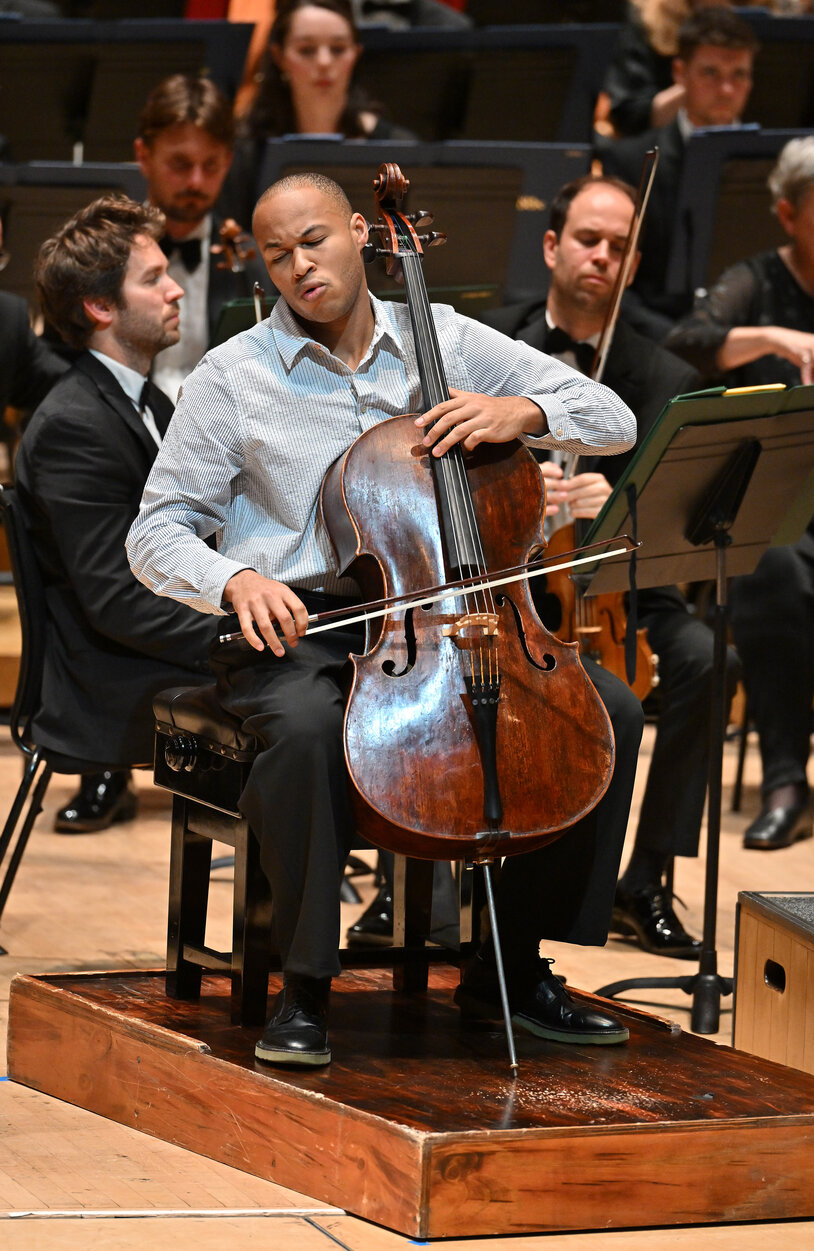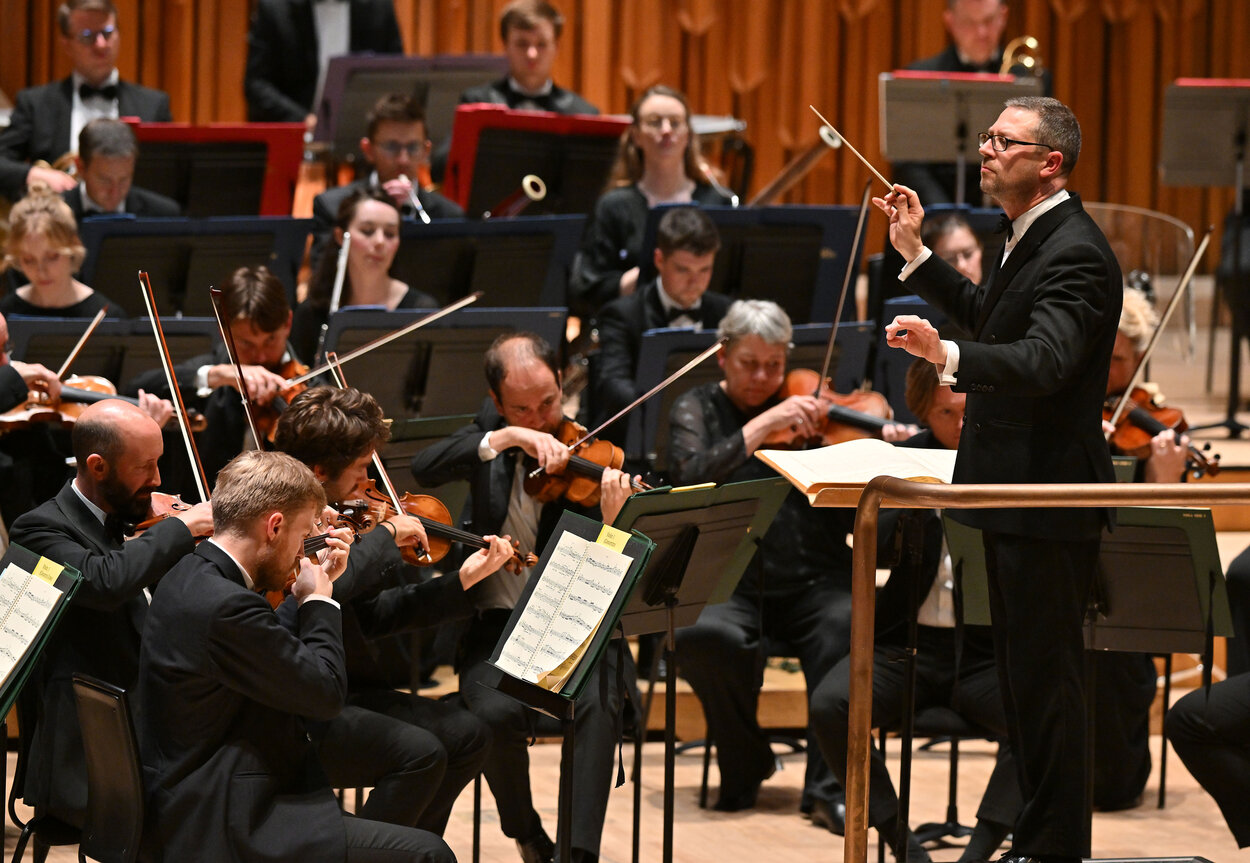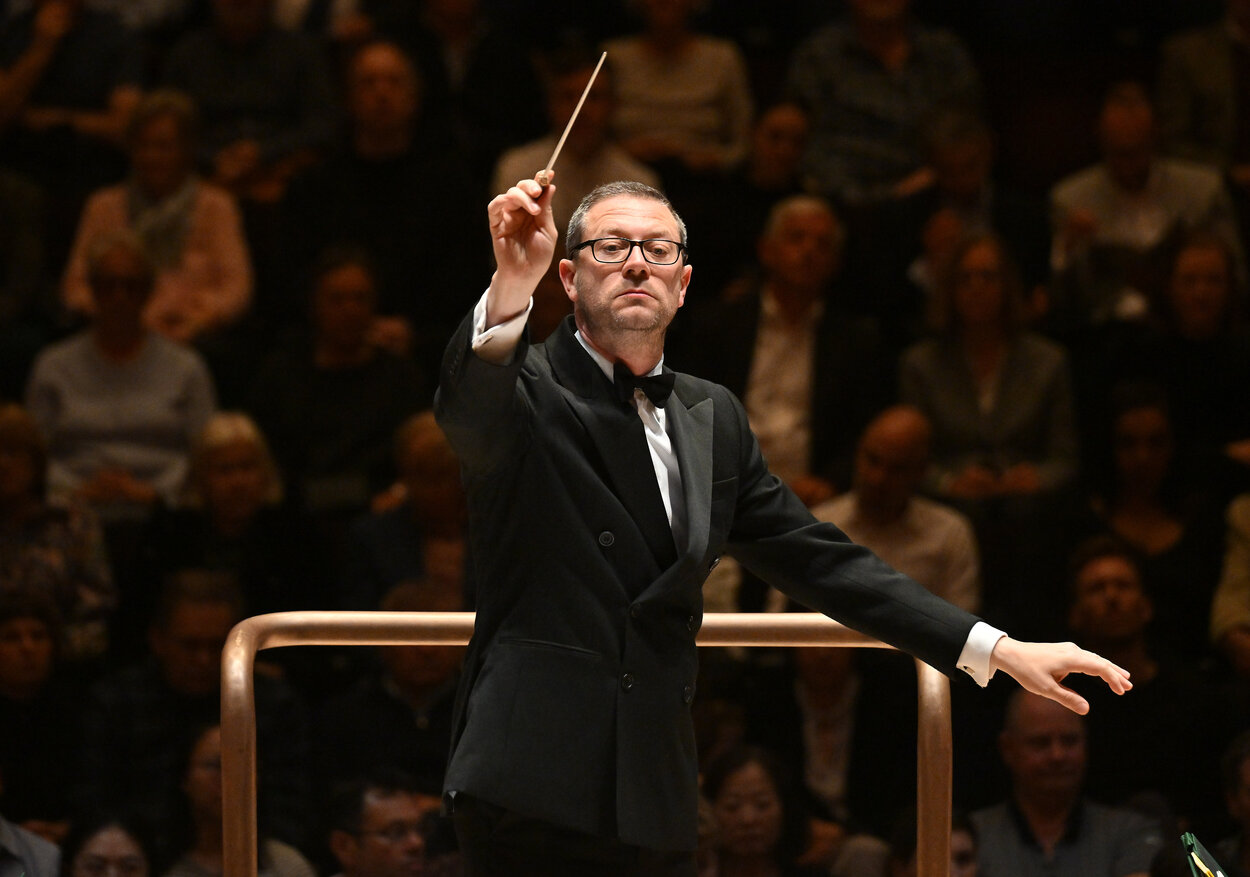A programme of less-loved siblings – Shostakovich’s gnarly Second Cello Concerto and Rachmaninov’s “not-the-Second” Symphony No. 1 – gave John Wilson and his Sinfonia of London the chance to do what they do best: force an audience to take a second look.
The Shostakovich has benefitted over the past few years from the advocacy of Sheku Kanneh-Mason – an unexpected choice for a young cellist who stormed to victory at the BBC Young Musician competition in 2016 with the more obviously ingratiating Concerto No. 1, whose signature is singing warmth of tone and breadth of melodic line.
 There’s precious little opportunity for either in the 1966 concerto, born at a time of illness (completed while Shostakovich was at a sanatorium) and a political identity crisis, as the composer wrestled with his recent membership of the Communist Party. For a work Shostakovich described as “the Fourteenth Symphony [his songs and dances of death] with a cello part”, it’s almost wilfully lean. A vast orchestra, heavy with harps, contrabassoon, a phalanx of percussion, almost never sounds as one, instead constantly forming and reforming in a shifting series of textures around the soloist – the fixed, almost ever-present point at its churning centre.
There’s precious little opportunity for either in the 1966 concerto, born at a time of illness (completed while Shostakovich was at a sanatorium) and a political identity crisis, as the composer wrestled with his recent membership of the Communist Party. For a work Shostakovich described as “the Fourteenth Symphony [his songs and dances of death] with a cello part”, it’s almost wilfully lean. A vast orchestra, heavy with harps, contrabassoon, a phalanx of percussion, almost never sounds as one, instead constantly forming and reforming in a shifting series of textures around the soloist – the fixed, almost ever-present point at its churning centre.
Since Kanneh-Mason (pictured left) first took the concerto out in public in 2022 there has been audible change. Pushing past the lure of beauty, he’s now relishing the rasp, the grunt and grind of this embattled piece. The solo opening – numb, wan – sees him smoothing out vibrato, refusing to woo or emote, later losing himself among the dull browns of cellos and basses. His is an introspective account; like Stoppard’s imprisoned Ivanov and his hallucinated symphony orchestra, he seems to pull the sounds around him from his own imagination. It makes for a tough listen at times. Does the central Allegretto (with its jaunty Odesa street-song “Buy my bread rolls”) step over the line from sardonic into out-and-out bitterness? Are those cadenzas and their percussion-ghosts necessarily so bleak, the fiendish double-stops so strained? Wilson keeps things taut and fiercely – violently – precise, rhythms calculated with the minute accuracy of a Soviet apparatchik. There are pops of colour – the brass and percussion swaggering on at the start of the Allegretto finale, the massive, head-banging dance towards the end – but there’s little easy gratification here. Even Kanneh-Mason’s encore (Weinberg’s Prelude No. 18 Sarabande) rejected the consolation of Bach for his ghostly echo in this twisted dance.
It makes for a tough listen at times. Does the central Allegretto (with its jaunty Odesa street-song “Buy my bread rolls”) step over the line from sardonic into out-and-out bitterness? Are those cadenzas and their percussion-ghosts necessarily so bleak, the fiendish double-stops so strained? Wilson keeps things taut and fiercely – violently – precise, rhythms calculated with the minute accuracy of a Soviet apparatchik. There are pops of colour – the brass and percussion swaggering on at the start of the Allegretto finale, the massive, head-banging dance towards the end – but there’s little easy gratification here. Even Kanneh-Mason’s encore (Weinberg’s Prelude No. 18 Sarabande) rejected the consolation of Bach for his ghostly echo in this twisted dance.
When you’ve got all that percussion lying around it would be a shame not to use it, and Kenneth Hesketh’s PatterSongs obliged by way of an opener, sending the orchestra into a scuttling, juddering frenzy, periodically pulled up short by the officious woodblock. Inspired by Gogol, this reworked music from Hesketh’s opera The Overcoat, crisply dispatched by Wilson (pictured below) and his band, owes more than just its plot to Russia. Finally released after the restraint of the Shostakovich, the Sinfonia seized Rachmaninov’s First Symphony as though Rimsky-Korsakov (who famously declared that he “[did] not find this music at all agreeable”) had insulted their mothers. Pianissimos sobbed with Russian fervour in the strings, fortissimos threatened to blister as an orchestra of Europe’s top players brought youth orchestra fervour to music they convinced us they had never performed before.
Finally released after the restraint of the Shostakovich, the Sinfonia seized Rachmaninov’s First Symphony as though Rimsky-Korsakov (who famously declared that he “[did] not find this music at all agreeable”) had insulted their mothers. Pianissimos sobbed with Russian fervour in the strings, fortissimos threatened to blister as an orchestra of Europe’s top players brought youth orchestra fervour to music they convinced us they had never performed before.
Generating the momentum to power a work that can seem full of dead-ends and unfinished thoughts, pulling us rigorously back to that central four-note theme that just won’t quit, even as fugues and chorales and fanfares all take their turn, Wilson’s was a single-minded account. There was space for lyric episodes – that gorgeous love-duet between cellos and violin in the Larghetto, the clarinet solo in the same movement – but architecture was always uppermost. Tensile right through to those final gong crashes, this was an unarguable case for a symphony with plenty of argument in its history. Wilson has done it again.














Add comment